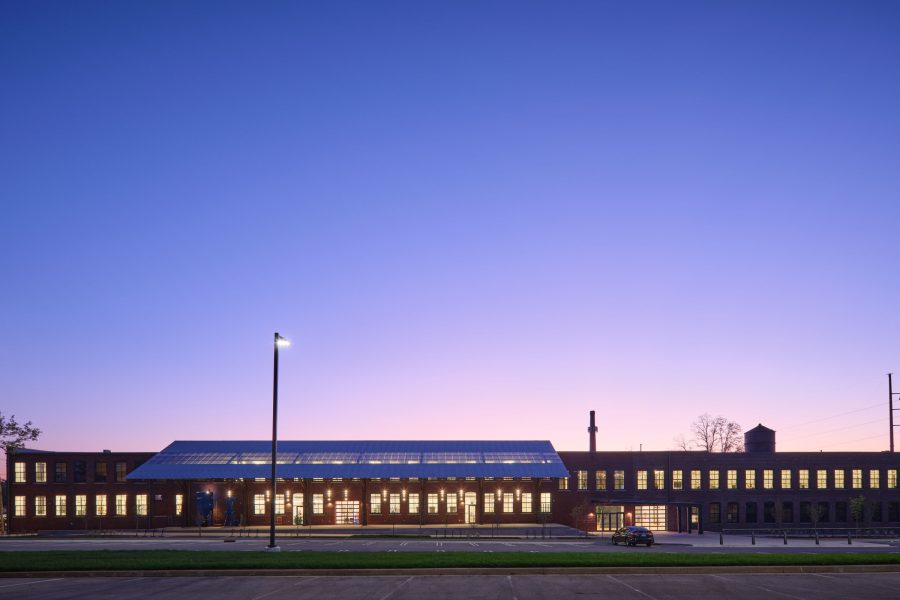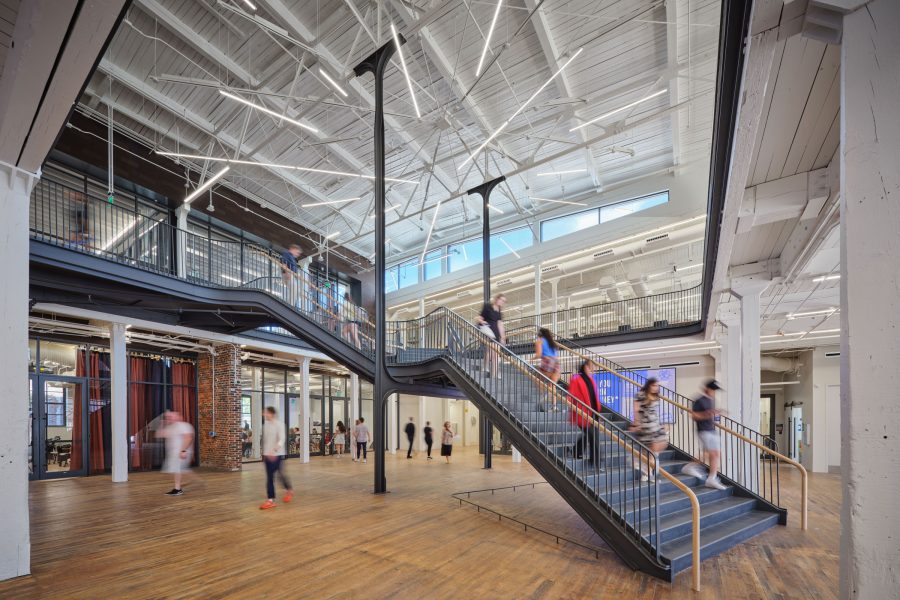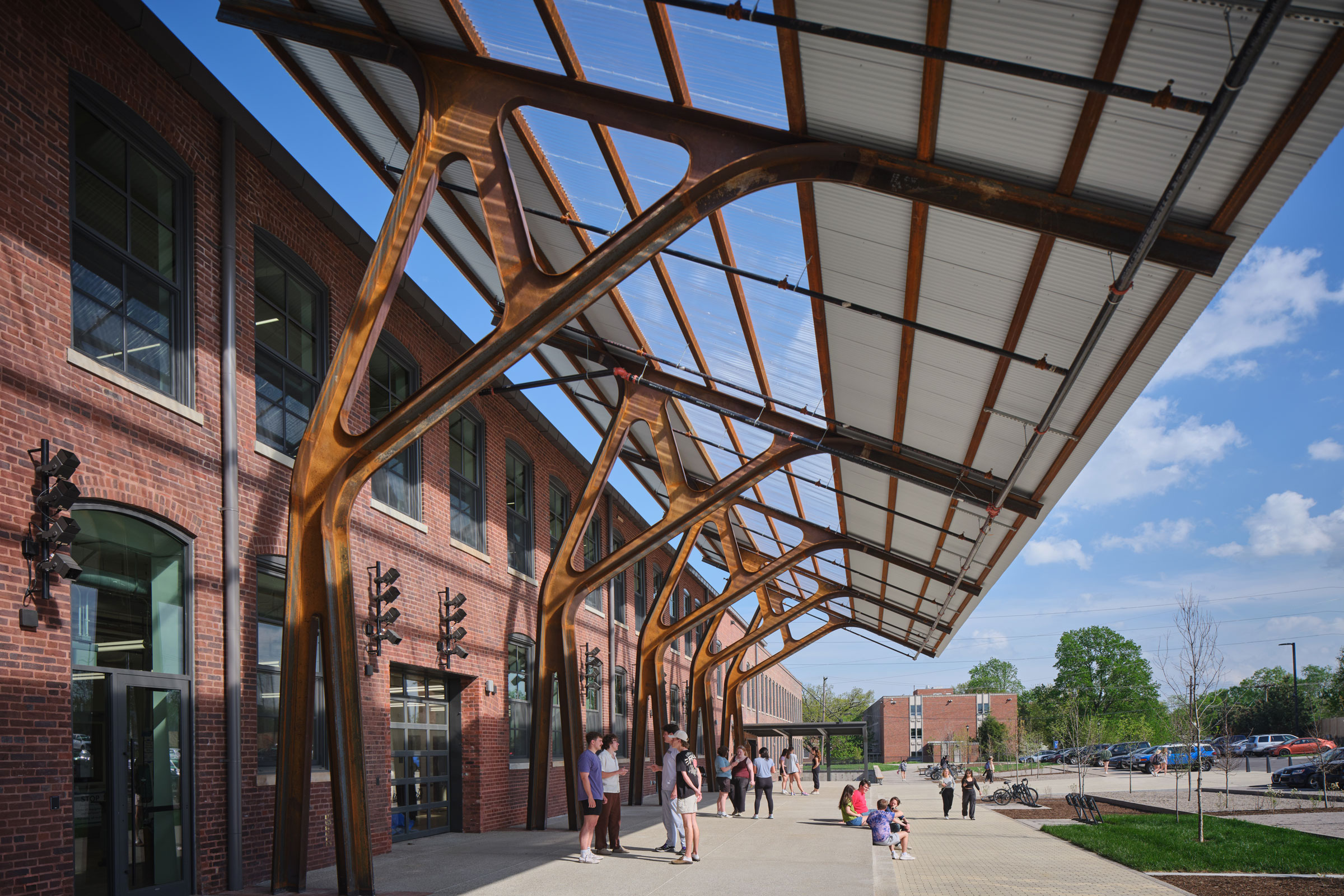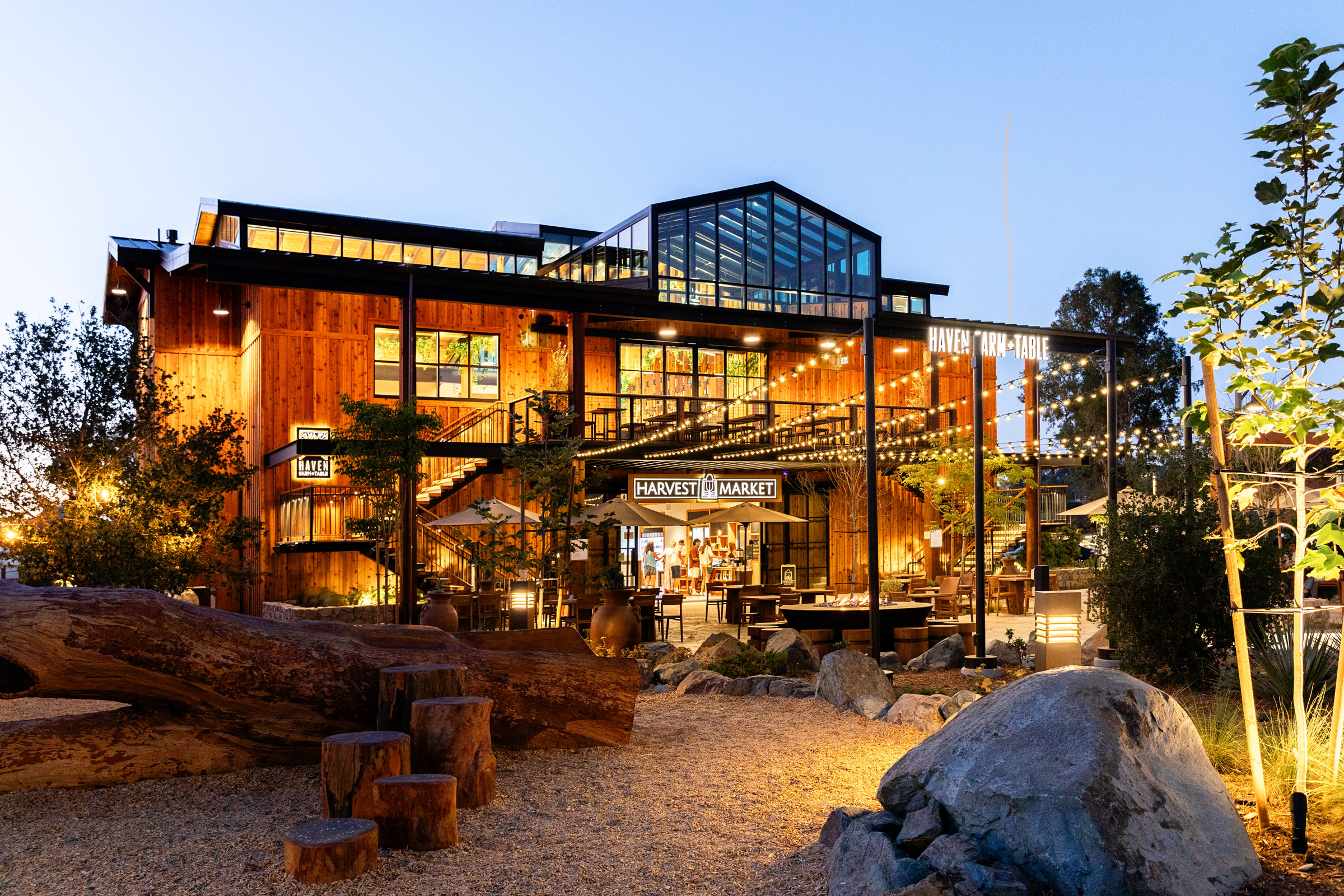Story at a glance:
- Studio Gang’s transformation of the Gray Design Building at the University of Kentucky melds history with innovation, turning a 20th century tobacco warehouse into a cutting-edge academic facility.
- By preserving the building’s original structure and integrating advanced systems like geothermal wells, the project embodies sustainable design principles while reducing its carbon footprint.
- The Gray Design Building stands as a dynamic space where future architects learn in an environment that bridges past and future, indoor and outdoor, all while showcasing the power of adaptive reuse.
As you approach the Gray Design Building at the University of Kentucky, the boundary between interior and exterior begins to blur. The 20th century tobacco warehouse—now a cutting-edge academic facility—breathes with the landscape. Expansive windows reflect the sky while weathered brick tells of the building’s past.
Students move between indoor studios and outdoor workspaces, embodying the seamless transition Juliane Wolf, design principal and partner at Studio Gang, envisioned for this adaptive reuse project. “We were able to reuse most of the existing building’s structural components, which greatly reduced the project’s embodied carbon,” Wolf says, referring to the structure, foundation, skin, and roof.
Limiting the need for new materials, the team focused on upgrading the envelope with a new roof membrane, interior insulation, tuck-pointed brick, and operable windows for improved ventilation.
Indoor-Outdoor Transition
Sustainability also extends beyond the building’s shell. A geothermal well system in the adjacent parking lot provides 100% of the heating and cooling. The southwest-facing facade and main entry feature a new, large canopy and native trees, creating shade and a comfortable microclimate. Transparent panels allow daylight to filter through, while carefully designed gaps promote air circulation. Wolf says it’s all part of a design approach to reinvent the building in a contemporary way while maintaining a relationship with the historic structure.
This indoor-outdoor connection is also realized in the building’s layout. Wolf’s team made the bold decision to place the workshop adjacent to the main entry—an unusual choice for a design school. “Typically the shops are tucked away in the back of the basement,” she says. “But here it’s right in the front.” This placement allows for easy movement of large prototypes or pieces between the indoor workshop and outdoor spaces, facilitating a more fluid creative process.
A Hub of Innovation

Looking down from the second level, the building’s transformation is striking. What was once a tobacco warehouse now pulses with creativity and collaboration, embodying its new life as an innovative design hub. Photo by Tom Harris
Inside the Gray Design Building, visitors are transported from a world of industrial past to a vibrant center of architectural innovation. The space that once housed heavy, wet tobacco has been transformed into a place of creative inspiration.
At the heart of this transformation lies a central staircase, strategically placed to create what Wolf calls “a hub of energy right in the middle of the building.” This isn’t just a means of vertical circulation; it’s the pulsing core of the entire structure.
Surrounding the staircase are carefully planned openings in the floors, creating a visual connectivity that spans two levels. This design choice allows for views across different floors, fostering a sense of community and shared purpose among students and faculty.
This center of activity is juxtaposed with quieter faculty spaces at both ends of the building, creating a balanced ecosystem that caters to different needs and work styles. The result is a space that’s alive with the energy of learning and creation.
The building’s transformation from a tobacco warehouse to an educational space is more than just functional; it’s deeply symbolic. “The opportunity to take something with an unhealthy association and transform it into a positive and optimistic space for future makers was an exciting aspect of this project,” Wolf says. This builds on Studio Gang’s ongoing work to reimagine older structures—a practice that’s as much about sustainability as it is about design innovation.
Symbolic Transformation

The revitalized facade of the Gray Design Building—where historic brick meets modern glass—exemplifies the seamless blend of past and future in Studio Gang’s adaptive reuse project. Photo by Tom Harris
The building’s history presented unique challenges and opportunities. The lower level, designed to support wet tobacco’s immense weight, featured tightly spaced timber columns. In contrast the top level was light and open. Wolf’s team embraced these constraints, using them to create a dialogue between old and new.
This dialogue is most evident in the central staircase columns. “At the top of the timber columns horizontal members support and spread the load of the truss,” Wolf says. “We wanted to highlight this central gathering space of the building so we made a similar detail out of steel for the new main staircase, creating that dialogue between the old and new where it’s not replicated, it’s just reinterpreted.”
Details like this extend to every aspect of the building, preserving and adapting existing materials wherever possible.
Designing for the Future

Preserved timber columns and reinterpreted steel supports showcase the thoughtful dialogue between old and new, central to the building’s design philosophy. Photo by Tom Harris
The Gray Design Building stands as a testament to the power of adaptive reuse in creating sustainable, inspiring learning spaces. It demonstrates how thoughtful design can transform not just a building’s physical structure, but its essence—from a space of production to one of innovation, from a relic of the past to a beacon for the future of sustainable architecture.
A transformation from tobacco warehouse to design school represents the power of architecture to change narratives, create positive spaces, and shape a sustainable future. For the architects of tomorrow studying within its walls, the Gray Design Building is not just a place of learning—it’s a constant source of inspiration and a tangible example of the principles they aspire to embody in their own future works.

Drawing courtesy of Studio Gang


